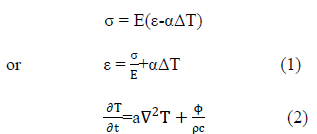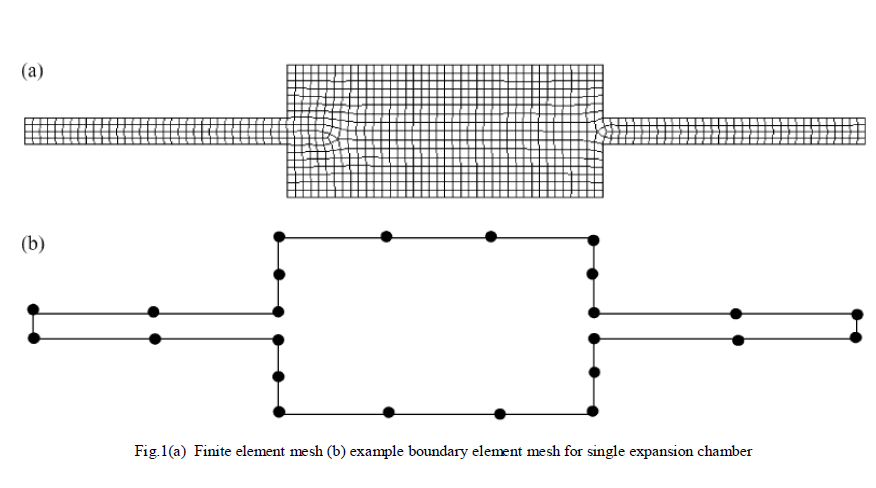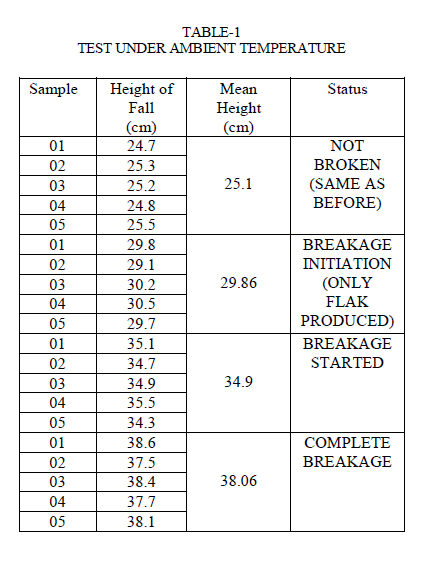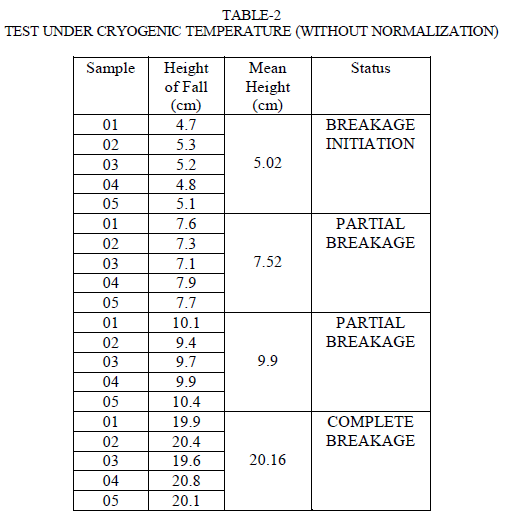ISSN ONLINE(2319-8753)PRINT(2347-6710)
ISSN ONLINE(2319-8753)PRINT(2347-6710)
| Titov Banerjee1, Santanu Bandyopadhyay2, Prasanta Kumar Das3 Assistant professor, Mechanical Engineering Department, B.I.E.T, Suri, Birbhum, West Bengal, India1,3 Associate professor, Mechanical Engineering Department, B.I.E.T, Suri, Birbhum, West Bengal, India2 |
| Related article at Pubmed, Scholar Google |
Visit for more related articles at International Journal of Innovative Research in Science, Engineering and Technology
Existing stone crushing and size reduction process requires large quantity of electrical power. It creates environmental pollution with dust cloud, health hazards, noise etc, which have adverse effect on human organism and biological environment. It involves much manual labor in the polluted environment. Workers often become sick and sometime they suffer from various diseases. Objective of the research is to establish an alternative approach for stone crushing and size reduction process which would drastically reduce these problems. Material characterization of ceramics like building stones in cryogenic temperature is nowadays a challenging issue. It may find a new dimension in design and development of stone crushing and size reduction process. It is assumed that in cryogenic temperature amorphous materials like building stones require very less impact energy for crushing with minimizing dust cloud, noise pollution, other pollutants and manual labor. The authors purpose here to establish an analytical model for estimation of energy requirement for crushing the stone under cryogenic conditions and also want to predict the critical time of exposure to cryogenic environment for accomplishing the crushing operation. The results in the experiment given in this paper were obtained after an assumed time (40 minutes/ 50 minutes) by which thermal equilibrium was reached.
Keywords |
| dust cloud, cryogenic temperature, amorphous materials, impact energy |
INTRODUCTION |
| In recent decades, there has been an increase in interest in the application of cryogenic treatment to different materials. It has been reported that cryogenic treatment can double the service life of HSS tools, and also increase hardness and toughness simultaneously [1] and [2]. If cryogenic treatments can double the service life of HSS, it could probably do the same for tungsten carbide tools [3]. One of the most prevalent claims in low-temperature treatment is an increase in wear resistance of certain steels [1], [7] and [8]. Others claim that cryogenic treatment facilitates the formation of fine carbides in the martensite ,thus improving the wear resistance[4] and [5]. However, the lack of sufficient information in the literature regarding the metallurgical aspects that cryogenic treatment confers better wear resistance and consequently higher tool lives as well as contradictory results that are also encountered [2], [7] and [8] lead to many doubts and questions involving the practical application of this sort of treatment. Popandopulo and Zhukova [9] carried out dilatometry studies and microstructure analysis during cryogenic treatment. They observed volume reduction of the specimen at the temperature range of −90 to +20 °C. This behaviour was attributed to partial decomposition of the martensite and precipitation of carbon atoms at dislocation lines and formation of ultramicroscopic carbides. Stone crushing in an engineering sense is a phenomenon of material failure by inducing/imparting compressive stress. Therefore some of the existing failure theories should be pertinent in this contest .However no work in this area could be found out by extensive literature survey. So the present work is a new standalone approach and is proposed to be carried out on the basis of the assumption that the material during crushing fails when the applied strain energy exceeds the material capability to withstand maximum strain energy. Further, basic assumption is made that the stone in general is a material with high modulus of elasticity and exhibit only small strain before failure. Therefore it will be fairly accurate if we presume that general Hook’s Law (1) holds good. Similarly since the crushing is considered under cryogenic condition, the following Maxwell’s Relation for the time varying temperature field (2) will also be applicable in this case for the final estimation of the induced stress on account of temperature field. |
 |
| Liquid nitrogen can be used as a cryogenic fluid to create cryogenic condition for experimental purpose. Commercially viable or not, is a scope of economic analysis. However, the research will be appropriate from the view point of serious concern that stone crushing a highly environment polluting process. Determination of critical temperature at which impact energy requirement will be minimum and also to estimate the quantity of minimum energy required for crushing are very important in this research. Investigations can be carried out by two distinct method; Finite Element Method and physical experimentation. Since both elasticity and heat transfer are different parts of continuum media mechanics, the evolution of a continuum is governed by general balance equations of mass, momentum, energy, completed with materials constitutive relations and with initial and boundary conditions ( space, time constraints). Two issues are appearing; a) strain due to application of mechanical forces. b) Strain resulting from temperature field. These two different issues can be analyzed separately and finally can be superimposed for making the requisite prediction |
| The goal of the work is to find out |
| 1. Energy saving in the crushing process if any. |
| 2. Reduction in local pollution label, e.g. sound pollution, dust particulate pollution and health hazards. |
| It is a well known fact that when a material is subjected to a very low temperature it can be fractured with application of low level of energy or it may even get fractured spontaneously. Hence the use of cryogenics is quite prevalent for the production of powder metal and metallic glasses. It is also an established fact that the fundamental property of material like tensile strength and young modulus also increase with the reduction of temperature. Both of the above parameters change nonlinearly depending upon the distribution of temperature field which is governed by general Max-Well equation(2) |
| It can be reasonably presumed that the same temperature effect also be applicable for materials like building stone or rock materials. |
| Following simple assumptions are made for the purpose of theoretical prediction on the amount of external energy to rock materials that may have to be supplied for crushing the stone at cryogenic temperature: |
| 1. The rock is non crystalline and amorphous |
| 2. Though the actual will be consisting of both atomic and molecular aggregates, for the present study an atomic view of the rock in considered |
| 3. The interaction between adjacent atoms of the rock will be governed by the well known bond energy equation |
| An atomic view of fracture: A material fractures when sufficient stress and work are applied on the atomic level to break the bonds that hold atoms together. The bond strength is supplied by the attractive forces between atoms [10]. Figure 1 shows schematic plots of the potential energy and force versus separation distance between atoms. The equilibrium spacing occurs where the potential energy is at a minimum. A tensile force is required to increase the separation distance from the equilibrium value; this force must exceed the cohesive force to sever the bond completely. The bond energy is given by |
 |
| Where X0 is the equilibrium spacing and P is the applied force. It is possible to estimate the cohesive strength at the atomic level by idealizing the inter-atomic force- displacement relationship as one half the period of a sine wave: |
| Where the distance λ is define if Figure 1 for the sake of simplicity, the origin is defined at X0.For small displacements, the force –displacement relationship is linear: |
 |
| 1. The P.E. and the forces as a function of atomic separation will be in accordance with the scheme as shown in Fig1. |
| 2. The negative strain will be manifested in the form of strain energy which will be subsequently viewed as an increase in P.E. of the whole system of atomic aggregate of the rock and resultant stress will be given by the governing equation of generalized Hooks Law; σ = E(E - αΔT). |
| 3. When P.E. of the system of rock riches a threshold value the fracture will take place and the P.E. will be manifested as surface energy creates in the fracture process. |
| For a preliminary validation of the above assumptions a simple crushing experiment with samples cooled in liquid nitrogen was carried out in the laboratory. |
II. EXPERIMENTAL DETAILS |
| Sample specimen is placed on the platform of a impact testing machine, the machine is used to determine the impact break load of any specimen to break it. A load of 14.5 kg is allowed to fall on the specimen and the height of fall at which breakage of sample is happening is noted. The experiment is repeated for simultaneous five specimens every time and the average height of fall is noted. The experiment is carried out under two conditions, one at normal atmospheric condition and another by dipping the specimen under liquid nitrogen, a cryogenic fluid, for about 40 minuets. |
| The impact testing machine, shown in Fig 2, is fitted with guide rail, which controls or guide the load hammer of 14.5 kg weight, for a lift height (h) from the base, where the specimen in kept. The maximum height of fall is 384 mm. |
 |
III. EXPERIMENTAL RESULTS AND DISCUSSION |
| The outcome of our experiment are presented as follows: Material specimen :- (1) red stone:- quarzite ( a type of rock material). Specimen size : 63 mm x 25 mm x 20 mm. |
 |
 |
| Result shows that for breaking the sample completely at ambient temperature an average of 14.5 x 0. 3806 KJ energy was required; whereas the same sample broke with an average energy of 14.5 x 0.2016 KJ after cryo-treatment. Therefore energy saving achieved is about 47%. The purpose of the present study is to show that by theoretical analysis with the help of the stated governing equations (1) and (2) a fairly accurate predictions about the quantitative reduction in the crushing energy requirement can be established. |
IV. CONCLUSION |
| Since the conventional stone crushing is not only environment hostile but also consumes substantial amount of energy, it is expected that an analytically predicted result should enforce a new way of stone crushing for the reasons of energy saving and environmental pollution control. |
NOMENCLATURE |
| σ Stress |
| E Modelus of elasticity |
| α Co-efficient of thermal expansion |
| T Kelvin temperature |
| ÃÂÃ⢠Rate of heat generation from source |
| ρ Density of material |
| c Specific heat |
| Eb Bond Energy |
| P Force |
| Pc Cohesive force |
| λ Distance |
References |
|